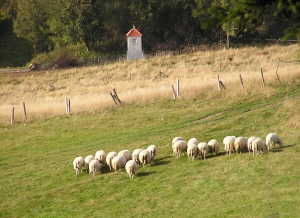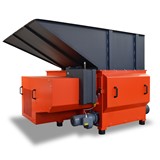Their discovery of the structure of this molecule, published in the open-access medical journal PLoS Pathogens, helps explain how this highly contagious bacteria can cause lameness in affected livestock.
Footrot is a contagious bacterial disease commonly affecting sheep in Australia, the UK and Europe. In its severe form, infected sheep become lame and are unable to eat properly, reducing the quality of their wool, which negatively impacts on financial returns to the grazier.
"We knew that strains of D. nodosus, the bacteria that causes footrot in sheep, secreted three proteases, and the theory was that they damaged the hoof. But it had never been proven," said Dr Ruth Kennan, a microbiologist at the ARC Centre of Excellence in Structural and Functional Microbial Genomics, at Monash University.
"So we mutated each of these genes, stopped them from being expressed and showed that the mutant strains behaved differently in the lab. We also had to confirm their role in this disease."
Dr Kennan's research collaborators from the University of Sydney, Camden, and NSW Department of Primary Industries, led by Professor Richard Whittington, and then tested these genetically-modified bugs in controlled trials with healthy sheep.
"When you knock out AprV2, there is no disease and the sheep are happy," said Dr Corrine Porter, a structural biologist at the Monash School of Biomedical Sciences.
"Therefore, AprV2 is essential for footrot to develop in these animals."
But what makes AprV2 unique?
Dr Porter said that this virulent protein differs from a closely related counterpart by one single amino acid.
"The three-dimensional structure of AprV2 showed us that this single amino acid is found on a loop, away from the active site of the enzyme. We think this loop acts as a hook to capture its bait, proteins which it then degrades," Dr Porter said.
The Monash team, led by Professors Julian Rood and James Whisstock, hope to identify what this disease-causing molecule binds to, and then use that information to develop inhibitors to proteases in the future.







-160x160-state_article-rel-cat.png)



-160x160-state_article-rel-cat.png)

-160x160-state_article-rel-cat.png)







